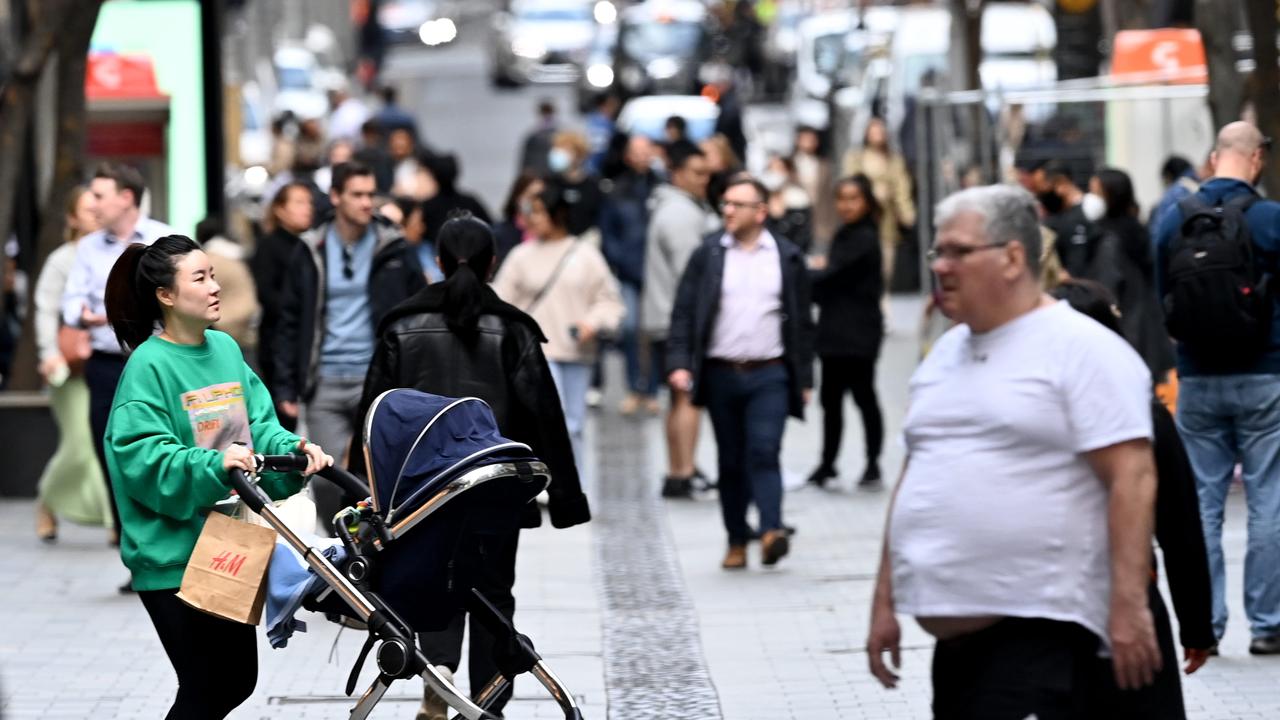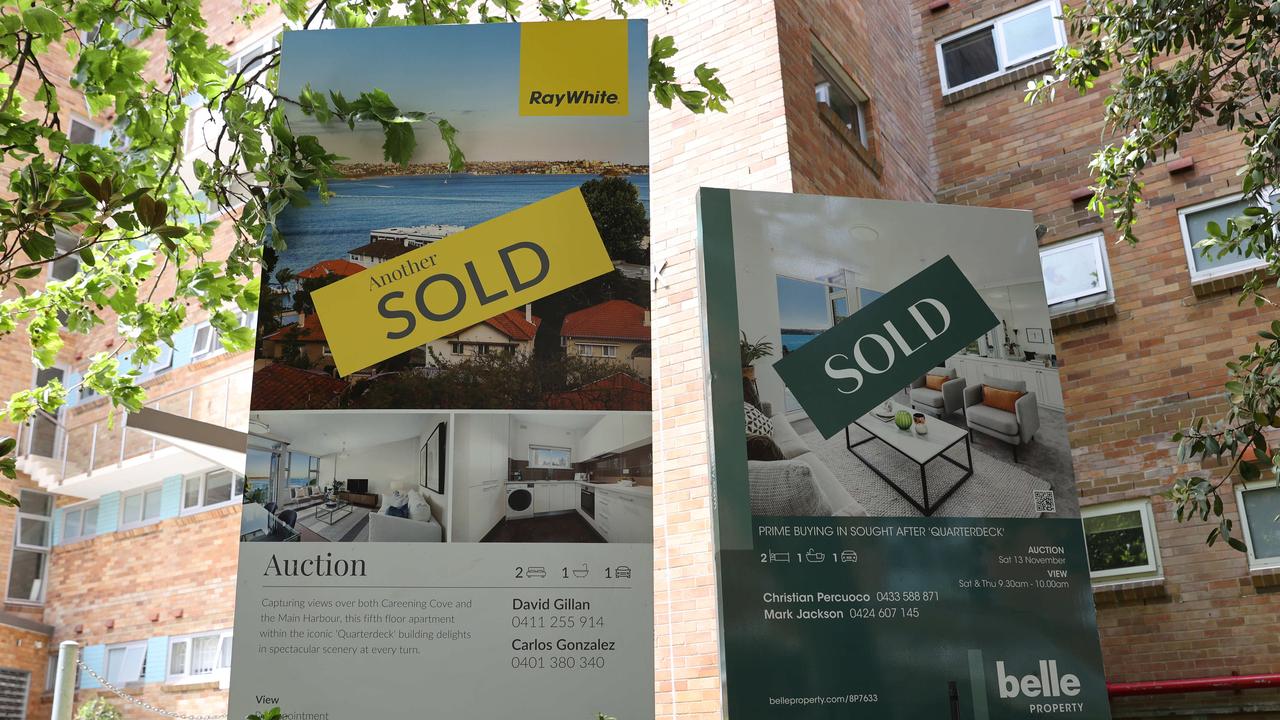Interest rates: How much the cash rate could rise by 2023
Australian homeowners could be forking out more than $2000 extra a month soon, with fears they don’t realise the “shock” headed their way.
Australian homeowners could be scrambling to find an extra $1000 to $2100 to make their monthly mortgage repayments, with chilling predictions interest rates could skyrocket above 6 per cent next year.
The average variable interest rate could soar to 6.48 per cent by the end of February 2023, more than doubling since April 2022 and pushing up monthly repayments over this period by 50 per cent, Canstar analysis found.
The big four banks have forecast an official cash rate above 3 per cent by the end of the year, with Westpac tipping it could be as high as 3.6 per cent by February 2023.
This means a homeowner with a loan of $1 million would be forced to fork out an extra $2103 a month by February compared to April 2022 if interest rates hit 6.48 per cent.
Stream more finance news live & on demand with Flash. 25+ news channels in 1 place. New to Flash? Try 1 month free. Offer ends 31 October, 2022 >

Even those with smaller mortgages would be hard hit, with a $750,000 loan lumped with $1577 extra a month by February if predictions are right.
Repayments on a $500,000 variable rate loan over 30 years at an interest rate of 6.48 per cent would amount to a mortgage repayment of $3154 per month.
This compares to monthly repayments for the same loan of $2103 in April when the average variable rate was 2.98 per cent.
Canstar analysis shows this represents a 50 per cent rise in monthly repayments in just 10 months.
It comes after the Reserve Bank of Australia (RBA) has increased interest rates every month since May this year in a bid to slow down spiralling inflation in the country.
Before the rate hikes, the official cash rate was a a historic low of 0.1 per cent.

While many predicted a rate rise of 0.5 per cent in October, the RBA scaled the pain down a little with a more modest 0.25 per cent increase, seeing the new cash rate set at 2.6 per cent.
But the rate pain won’t end there for mortgage holders, with the need for borrowers to adjust to the new norm of higher interest rates, said Canstar’s finance expert Steve Mickenbecker.
“ANZ, NAB and Westpac are forecasting the cash rate to climb to over 3 per cent by year’s end, and Westpac is taking it a step further by tipping the cash rate to peak at 3.6 per cent in February,” he said.
“This outcome could see the average variable rate skyrocket to 6.48 per cent or more than double the rate in April, just before the current rate rising cycle began.”

A recent Canstar survey conducted in August revealed that 24 per cent of Australians are expected to find things “tough” as interest rates rise, he added.
“Higher interest rates are a shock to a whole generation of borrowers, but until the Global Financial Crisis and Covid, the cash rate was at 5 per cent or above for 15 of its 19 years. Borrowers will have to get used to dealing with higher interest rates as the norm,” he said.
“Even though inflation remains way above the Reserve Bank’s target, it may still find a case for a conservative pause in cash rate rises.
“Recession is rearing its ugly head overseas, and with wage inflation way below price inflation and interest rate hikes, recent borrowers in particular are going to be under extreme stress.”

However, he said there’s no reason for mortgage holders to pause on ways to lower their repayments.
“The bargains are not as generous for refinancers as they were at the start of the year, but the margin between the better rates available and the mediocrity of average rates is just as wide. The best preparation for higher rates is to get into one of the leading rates right away,” he said.
“Refinancing into a lower rate loan will insulate borrowers from the next couple of Reserve Bank cash rate increases, and maintaining repayments at their current level, higher than required on the new loan, will build a buffer for times that are looking likely to get tougher.”

Meanwhile, buyers have also been hard hit with the latest interest rate rise knocking up to 23 per cent off how much they can borrow.
For those looking for a $1 million mortgage in April, rising interest rates have hammered borrowing capacity down to $765,000 in October, the PropTrack data showed.
For those looking for a $750,000 home loan, they can now only borrow close to $575,000, slashing it by hundreds of thousands of dollars.
Graham Cooke, head of consumer research at Finder, said October’s rate rise could be the one that pushes some buyers to the limit.
“It also means that the bottom rung of the housing market ladder is getting harder and harder to reach, as these rate increases will seriously hamper potential borrowers’ ability to buy,” he said.

The RBA’s tightening cycle has also pushed down the total value of housing loans by a further 3.4 per cent in August, said HIA economist Tom Devitt.
“The decline in August brings the value of housing loans to its lowest level in almost two years, down by 15.4 per cent on three months earlier,” he said.
“The number of loans for the construction or purchase of new homes also declined by 4.5 per cent in August, to its lowest level since the March 2020 – the first month of the pandemic in Australia.”
There is still a significant volume of work under construction that is driving economic activity across the economy and keeping the unemployment rate at exceptionally low levels, he added. “When this pool of work is completed, the full impact of this rate rising cycle will emerge. There remains a risk that this volume of ongoing work will obscure the adverse impact of rising interest rates,” he said.
“These treacherous lags that characterise this housing cycle could result in the RBA weighing too heavily on household finances and jeopardising the housing industry’s future soft landing.”






